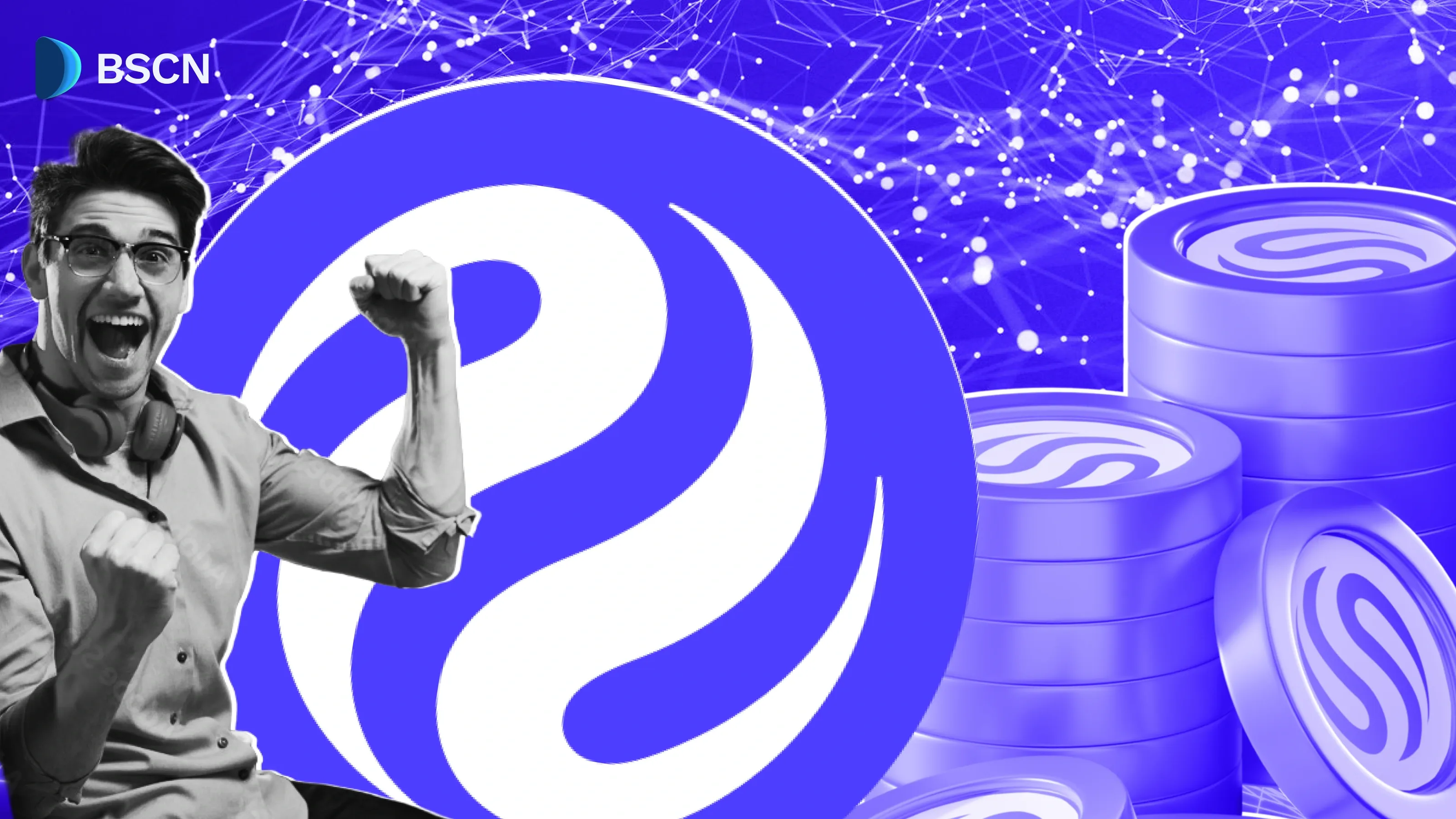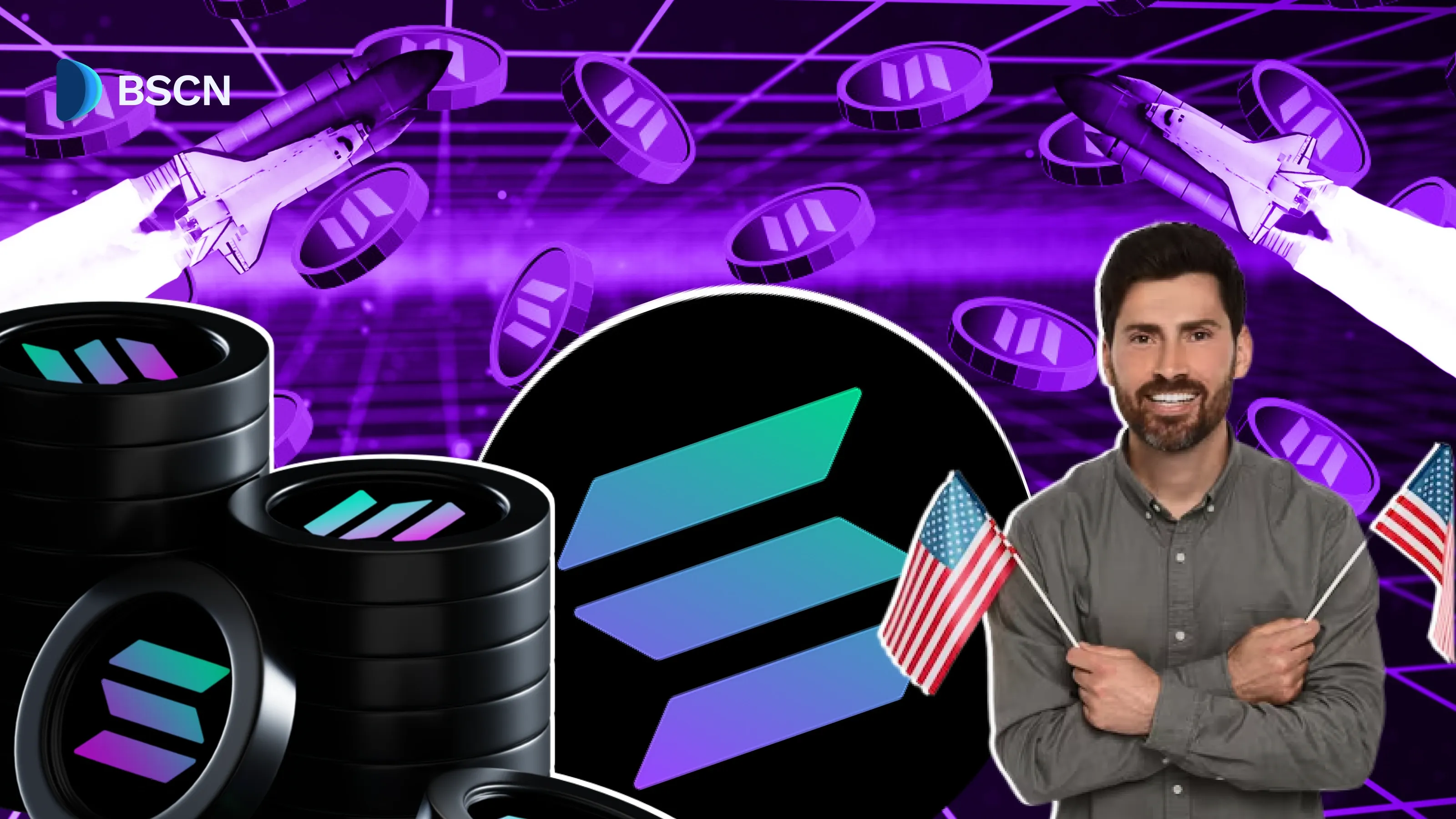WEB3
What is THORChain: Everything You Need to Know

THORChain enables cross-chain swaps without token wrapping, making it a bridge between blockchain networks. Initially launching on the Cosmos network and transitioning to its mainnet in 2021, THORChain now supports nine diverse blockchain networks.
BSCN
October 10, 2023
Summary
- Built on the Cosmos SDK, THORChain aims to provide interoperability and multi-chain swaps for users across various blockchain networks.
- THORChain's native asset approach allows for autonomous, transparent asset swaps without the need for wrapping tokens.
- Key players in the THORChain ecosystem include Swappers, Liquidity Providers, Node Operators, and Traders.
- THORChain's native coin, RUNE, plays a pivotal role in settlement, security, governance, and incentives within the ecosystem.
- The project was founded by Eric Voorhees in 2018, initially launched on the Binance network, and supports multiple blockchain networks.
- THORChain's unique development model operates without a traditional CEO or founders and relies on Gitlab for project management.
- Recent updates include a temporary trading halt for security reasons, the introduction of a lending protocol, and integration with Metamask.
An In-Depth Look at THORChain
The world of decentralized finance (DeFi) has been marked by innovation, and one of its game-changing developments is the Automated Market Maker (AMM) model. AMMs have empowered crypto enthusiasts to pool assets, facilitating peer-to-peer, decentralized asset swaps within a single blockchain network. However, these swaps typically occur within the confines of a single blockchain network, like Ethereum.
But what if you want to trade assets between different blockchain networks, bridging the gap between otherwise non-interoperable platforms? Enter THORChain, a decentralized cross-chain liquidity protocol revolutionizing the DeFi landscape.
THORChain is a decentralized exchange (DEX) with an AMM-based protocol based on the Cosmos software development kit (SDK), transitioning to its mainnet in June 2022. Its mission: is to enable seamless cryptocurrency swaps between blockchains without the need for wrapping tokens.
This comprehensive guide will provide you with all the information you need about THORChain, providing a user-friendly trading experience.

What is THORChain?
With its AMM-based protocol, THORChain provides the underlying technology to seamlessly swap cryptocurrencies between previously considered non-interoperable blockchain networks.
THORChain is a layer-1 network rooted in the Cosmos SDK and Tendermint. The network employs Threshold Signature Schemes (TSS) to fortify its leaderless asset vault.
Tendermint and TSS bring a layered Byzantine Fault Tolerance (BFT) consensus mechanism into play, ensuring that a two-thirds majority consensus is mandatory for any funds to enter or exit the primary TSS vault.
Key Players in the THORChain Ecosystem
1. Swappers: Fueling the Asset Swaps
Swappers are the heartbeat of THORChain. They utilize liquidity pools to execute asset swaps. This user category leverages the power of THORChain's cross-chain capabilities for seamless and secure trading.
2. Liquidity Providers: Adding Fuel to the Fire
Liquidity providers play a vital role by contributing assets to THORChain's liquidity pools. In return, they earn rewards, combining swap fees and system rewards, creating an enticing yield for participants.
3. Node Operators: Guardians of the Network
Node operators, known as THORNodes, are the guardians of the network. They ensure its security and functionality. In exchange for their service, they receive rewards in the form of fees for each swap conducted on the network.
4. Traders: Profit-Seeking Balancers
Traders actively monitor and rebalance pools, seeking profitable opportunities in the ever-changing DeFi landscape.

Swapping Without Wrapping
Unlike many others, THORChain doesn't require assets to be wrapped before swapping. It performs autonomous, transparent asset swaps using native assets on the THORChain network.
The Role of Liquidity Pools
Asset swaps on THORChain are facilitated through liquidity pools. These pools consist of assets contributed by liquidity providers and are safeguarded by a network of node operators. Liquidity providers deposit their assets into these pools, earning yield through swap fees and rewards.
THORChain's permissionless design enables anyone to add liquidity to an existing pool. Importantly, THORChain is non-custodial, meaning only the original depositor has the authority to withdraw the assets they've contributed.
Worth noting that before becoming node operators, users must provide a bond in the form of the native token, RUNE. These bonds are collateral, ensuring node operators act in the network's best interest. The total bonded amount must be twice the size of the RUNE pooled.
The Native Asset Swap Process
With ThorChain, users send their assets to THORChain during an asset swap, initiating a sequence of native swaps. Swapping Bitcoin (BTC) for Ethereum (ETH) involves converting BTC to RUNE and then converting RUNE to ETH. Finally, ETH is sent back to the user from a THORChain vault. This approach enables THORChain to conduct native swaps without asset wrapping.
Market Regulation Through Arbitrage
THORChain employs arbitrage traders to regulate market prices. These traders identify mispriced assets across different markets, profiting from price discrepancies. This mechanism ensures that THORChain's market prices remain in check without needing oracles or external interventions.
THORChain operates as a vault manager, constantly monitoring deposits, withdrawals, and pool ratios to determine asset values. This approach creates decentralized liquidity, removing centralized intermediaries from the equation.

The Role of RUNE in THORChain
After examining THORChain's cross-chain liquidity mechanism, let’s now consider the native coin, RUNE. This digital asset is at the heart of THORChain's ecosystem, with a total supply of 500,000,000. RUNE serves as the backbone, supporting the protocol across various crucial functions:
Settlement: The Foundation of Cross-Chain Swaps
At the core of THORChain's functionality is its reliance on liquidity pools for executing cross-chain token swaps. These liquidity pools, pivotal to the platform's operation, require funding from liquidity providers. Importantly, these providers must contribute assets from different blockchain networks paired in a 1:1 ratio with RUNE coins.
For instance, to add $1,000 worth of Ethereum (ETH) as liquidity, a provider must simultaneously add $1,000 worth of RUNE to maintain this balance.
When users initiate asset swaps using THORChain, they must first convert their desired asset into RUNE. Subsequently, they receive their chosen asset from its corresponding asset pool.
Security: Proof of Bond Mechanism
To become THORNodes, participants must lock a substantial amount of RUNE, ranging from 500,000 to over 1 million RUNE.
Maintaining a 2:1 ratio between bonded RUNE and staked RUNE across liquidity pools is a fundamental requirement. For instance, if there's $1 million worth of RUNE across all liquidity pools, THORNodes must bond RUNE tokens worth $2 million.
If a node attempts to misappropriate assets from the pool, the amount of locked RUNE they hold is reduced by the total value of the assets they attempted to steal. This disincentivizes nodes from acting against the network's best interests.
The validator set in THORChain undergoes changes every three days, coinciding with the vault churn. Old validators are forcibly removed, making way for new validators to join. This process also entails the creation of new vault keys and the redistribution of all network assets to fresh vaults, proving network solvency and access to all funds.
Governance: Empowering Node Operators
Node operators play a pivotal role in governing THORChain through a mechanism called mimir. A majority vote from these nodes can result in the alteration of network constants. Nodes also engage in the Architecture Decision Records (ADR) process, which dictates the architecture and direction of the protocol.
Liquidity providers wield their RUNE tokens to create new pools on THORChain. These pools are activated when they reach a specific liquidity threshold, empowering liquidity providers to directly impact the platform's growth and diversification.
Incentives: Fostering Liquidity and Security
THORChain's use of RUNE tokens extends to incentivizing liquidity providers and node operators. The slip-based liquidity model is a powerful incentive mechanism, encouraging liquidity providers to participate by enabling seamless cross-chain token swaps.
Node operators, instrumental in securing the network, are rewarded in RUNE for their service. Additionally, the network subsidizes nodes by covering the gas costs associated with all outgoing transactions.
The network maintains economic security by dynamically adjusting rewards based on the incentive pendulum. When bonds significantly outweigh assets in vaults, rewards shift towards liquidity providers.
Fees are distributed to liquidity providers and node operators in accordance with the balance between security and liquidity, ensuring assets are never undersecured.
As a result, RUNE acts as the connective tissue within the THORChain ecosystem, providing the essential elements of settlement, security, governance, and incentives that drive the platform's success in cross-chain liquidity.
The RUNE distribution is as follows:
- 50.00% is allocated to Liquidity Emission
- 5.00% is allocated to Private Sale
- 13.00% is allocated to Operational Reserve
- 12.00% is allocated to Community Reserve
- 10.00% is allocated to Team & Advisors
- 6.00% is allocated to Seed

The Genesis and Financial Backing of THORChain
THORChain, the decentralized cross-chain liquidity protocol, had its beginnings in 2018. It was brought to life by Eric Voorhees, a prominent figure in the cryptocurrency landscape. Eric's extensive experience and expertise extend beyond THORChain; he is also the founder and CEO of the widely recognized ShapeShift exchange.
The journey of THORChain took a significant step forward when it launched on the Binance (BNB) network in July 2019. This initial foray laid the foundation for THORChain's mission to create seamless blockchain interoperability. With the launch of its mainnet in June 2022, the project's defining moment arrived.
The Unique Organizational Structure
THORChain asserts that it operates without a CEO, founder, or directors steering its development. Instead, the project's evolution is meticulously orchestrated through Gitlab, emphasizing a decentralized and collaborative approach.
Furthermore, the development team actively contributing to THORChain chooses to maintain a veil of anonymity. This anonymity is a strategic decision intended to safeguard the project's decentralization.
A Development Ecosystem Centered on Contribution
Within THORChain's ecosystem, active development and improvement are orchestrated through GitHub. The development team uploads code that enhances the functionality and value of the network. However, the project follows a unique model where the development team's primary allegiance is to the Nodes.
Nodes, the heart of the THORChain network, rely on Stakers for support, a relationship governed by the amount of RUNE tokens staked. In turn, Stakers channel funds into the THORChain exchange market. The vibrant ecosystem is further fueled by Swappers, who pay for exchanges and borrowed amounts, effectively ensuring the economic vitality of the protocol.
A Funding Journey in Stages
THORChain's journey has been enriched by strategic funding obtained through distinct rounds.
Let's delve into the various funding rounds that have played a role in THORChain's development:
- Funding Round (October 2021): THORChain raised $3.75 million in this funding round, signifying growing interest and support for the project.
- Public Sale (July 20, 2019): The project's early momentum was evident in its Public Sale, where $224,000 was raised. The average price per token during this sale was $0.032.
- Private Sale (July 2019): THORChain further solidified its financial foundation through a Private Sale that garnered $1.61 million. The average price per token in this round was $0.023.
- Seed Sale (December 2019): A Seed Sale held in December 2019 raised $600,000, with an average token price of $0.02.
THORChain's financial journey has also been supported by a group of investors. ICONIUM and Jon Carr-Harris are among the most recent investors who have contributed to the project's success.
In addition to these funding rounds, THORChain initially gained momentum with its Initial Exchange Offering (IEO) on the Binance DEX. This IEO marked a pivotal moment, with 20 million RUNE tokens sold. Prior to this, earlier funding rounds had already seen a total of 130 million RUNE tokens sold.
Recent THORChain Updates
Navigating Network Vulnerabilities
On March 28, THORChain had to halt all trading activities temporarily. This precautionary measure was in response to reports of a potential vulnerability linked to a THORChain dependency that had surfaced.
Empowering Borrowers with Lending Protocol
August 21 marked a milestone for THORChain as it introduced its lending protocol. This development opened new avenues for users to engage with the THORChain ecosystem. Users could now lend their native Layer-1 assets, including cryptocurrencies like Bitcoin (BTC) and Ethereum (ETH), to THORChain. In return, they had the opportunity to borrow USD-denominated debt, introducing a novel debt denominator named TOR.

Metamask Integration: A Game-Changer
ThorChain integrated with Metamask on Sept. 15 to expand the reach of THORChain. Metamask is a popular crypto self-custody wallet with over 30 million users worldwide. Its integration with Thorchain may change the game for the protocol. Because of the integration, Metamask users now have a way to conduct swaps in a self-custody environment.
Beyond Asset Swapping: Unlocking Possibilities
THORChain facilitates seamless multi-chain asset swapping at its core, enabling users to transact across various blockchain networks. However, the architecture and capabilities of THORChain's protocol extend far beyond this fundamental function. The platform opens doors to opportunities, including self-paying loans, composites, synths, and much more.
As of late 2022, THORChain boasts compatibility with a diverse array of nine blockchain networks. These include Avalanche, Binance (BNB), Bitcoin, Bitcoin Cash, Cosmos, Dogecoin, Ethereum, and Litecoin.
With a foundation built on innovation and a dedication to continuous improvement, THORChain aims to impact the future of decentralized finance and blockchain technology.
Disclaimer
Disclaimer: The views expressed in this article do not necessarily represent the views of BSCN. The information provided in this article is for educational and entertainment purposes only and should not be construed as investment advice, or advice of any kind. BSCN assumes no responsibility for any investment decisions made based on the information provided in this article. If you believe that the article should be amended, please reach out to the BSCN team by emailing info@bsc.news.
Latest News
Crypto Project & Token Reviews
Project & Token Reviews
Comprehensive reviews of crypto's most interesting projects and assets
Learn about the hottest projects & tokens
Latest Crypto News
Get up to date with the latest crypto news stories and events







